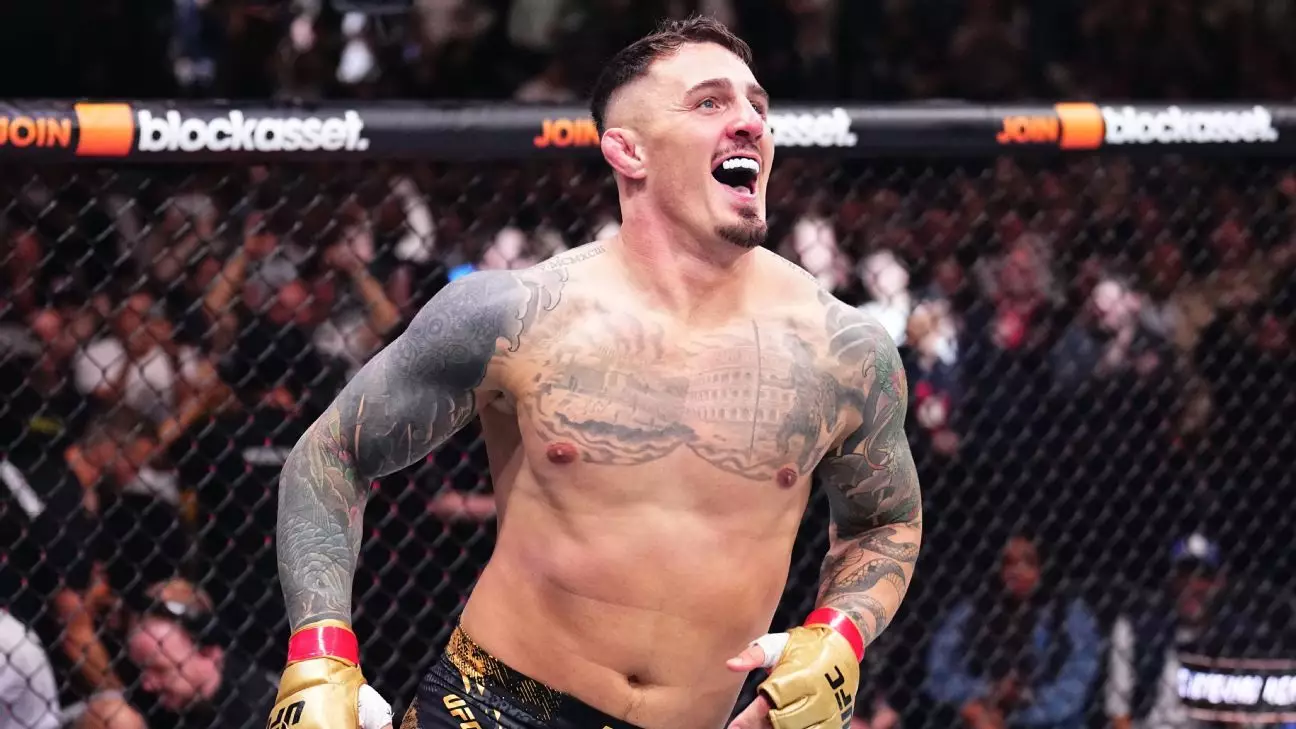The heavyweight division in the UFC stands at a crossroads, grappling with the absence of its greatest icon, Jon Jones. His recent retirement leaves a void that not only diminishes the division’s star power but also raises fundamental questions about its future trajectory. Jones, widely regarded as the GOAT of MMA, defined an era with his innovative fighting style and strategic dominance. Yet, his exit was marred by delays and a final act that many fans found underwhelming, opting not to face the rising star Tom Aspinall in his swan song. This decision, or lack thereof, has left the division in a state of limbo—a waiting game for new contenders to emerge and fill the void.
Jones’s strategic maneuvering—delaying retirement and hinting at future appearances—indicates the heavyweight division’s struggle to establish a clear hierarchy post his reign. His move to heavyweight seemed a calculated attempt to chase a second title, exploiting a perceived opportunity given the division’s current softness. But now, with his departure, the division is left with a blend of promising prospects and aging veterans, whose relevance varies depending on their ability to evolve quickly.
The retirement of a legend is supposed to usher in a new generation of stars; however, in heavyweight MMA, that transition appears sluggish. Aspinall’s rise is promising, but he’s still relatively untested beyond a handful of first-round finishes. The sense that the division may lack momentous matchups at the moment is palpable. Without Jones around, the heavyweight landscape feels less like a dynamic battleground and more like a waiting room awaiting its next big event.
The Promise of Aspinall and the Next Generation
In this quiet period of the division, Alexander “The Great” Aspinall has become a beacon of hope. His early UFC career boasts an impressive record, notably dismantling top contenders like Blaydes and Pavlovich swiftly. His ability to dominate opponents in the first round with ferocity and precision suggests he could be the future face of heavyweight MMA, potentially shaping the division for years to come.
Yet, Aspinall’s success also exposes the division’s fragility—his lack of high-profile, marquee work-in-progress opponents points to a stagnancy that only deeper competition could remedy. The heavyweight division is notoriously difficult to master because of its inherent risks: a single punch can change everything, making every fight unpredictable and thrilling. Aspinall’s early dominance is promising, but it’s a fragile foundation that needs reinforcement through meaningful rivalries with established contenders.
Among those potential rivals, Ciryl Gane emerges as a compelling candidate. Gane’s technical striking and athletic prowess could challenge Aspinall’s raw power; however, he needs to sharpen his mental game and fight IQ to truly threaten Aspinall’s ascendancy. The prospect of a Gane-Aspinall rivalry could inject excitement into the division, but such a fight hinges on matchmaking and strategic planning.
An even more tantalizing possibility lies in a potential blockbuster superfight: Aspinall versus Alex Pereira. Pereira, a proven knockout artist with a striking pedigree, transitioning from middleweight to heavyweight, might just possess the dynamism needed to stir interest and shake up the division. While size could be a concern—considering Pereira’s lighter frame—it’s the explosive power and unpredictability that would make such a matchup worth watching. It’s a rare opportunity for the UFC to create a true crossover spectacle that could breathe new life into the heavyweight scene.
The Veteran’s Role and the Challenge of Building a Legacy
As the division searches for its new torchbearer, aging veterans like Derrick Lewis stand as both gatekeepers and relics of a bygone era. Lewis, with his considerable knockout power and dedicated fan base, remains relevant—especially if he secures a highlight reel victory this weekend. A knockout win could reignite interest in a possible matchup against rising stars or even serve as a curtain call for one of his own.
The division’s history is rich with legendary figures—Rua, Rampage, Evans, and others—whose names elevated the sport during their primes. Aspinall’s early achievements, while impressive, will need to be bolstered by sustained success against tougher opposition before he can be dubbed the division’s next king. The shadow of Jones’s era looms large; Aspinall’s ability to carve out his own legacy depends on overcoming the weight of expectations and the division’s current scarcity of high-profile, compelling rivals.
An important element in this puzzle is the strategic promotion of fighters who can captivate audiences and elevate the division’s excitement level. The UFC must prioritize matchups that can showcase Aspinall’s skills against credible contenders like Gane or Pereira, rather than settling for fringe veterans or unranked fighters. Only through well-crafted rivalries and high-stakes bouts can the heavyweight division reclaim its position as the most thrilling division in MMA.
The Future of Heavyweight MMA: A Window of Opportunity
Heavyweight MMA, unlike other weight classes, inherently promises fireworks—one punch can alter everything in an instant. Its reputation for unpredictability makes it a golden ticket for the UFC to generate buzz and draw new fans. However, the current hiatus in generating superstars highlights a missed opportunity; the division’s momentum has stagnated, waiting for a charismatic figure to ignite the genre anew.
The arrival of a fresh contender capable of defeating Aspinall, Gane, or Pereira would catalyze this process. Our bet is on the emergence of someone from the ranks who combines power, skill, and personality—traits that resonate with the audience and can sustain the division’s excitement. Whether it’s a gritty veteran


Leave a Reply